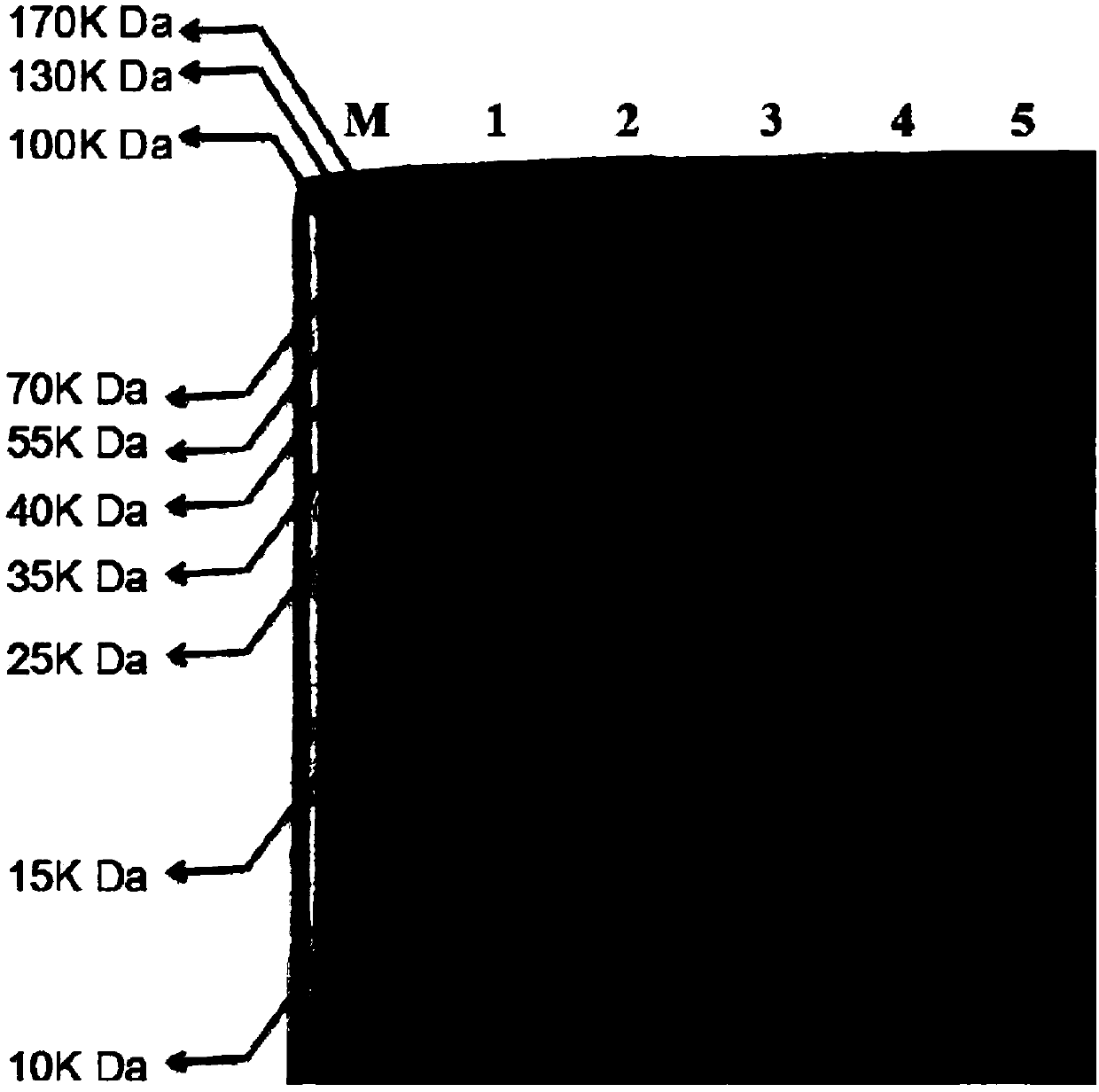Novel staphylophage and composition, as well as preparation methods and application thereof
A technology of staphylococcus and bacteriophage, applied in the field of microorganisms
- Summary
- Abstract
- Description
- Claims
- Application Information
AI Technical Summary
Problems solved by technology
Method used
Image
Examples
Embodiment 1
[0067] Example 1: Isolation, preparation and purification of phage
[0068] In the present invention, the source samples of bacteriophage J1P1, J1P2, J1P3, J2-1P1 and J2-1P2 are collected in the cow dung piled up for 1 day and night in Jiangnan Dairy Farm, Jiangning District, Nanjing City, Jiangsu Province, and desorbed by 0.9% NaCl solution for 24 hours. Centrifuge at room temperature to get the supernatant, filter through double-layer filter paper, and then centrifuge at low speed at room temperature, then filter the supernatant with a 0.22 μm filter membrane.
[0069]Isolation of phage: Take 10ml of filtered supernatant, add it to 10ml of 2 times TSB medium, add 1ml of phage host bacteria logarithmic phase bacteria liquid at the same time, place it at 37°C for 16 hours, take the above culture, and put it under the condition of 8000rpm Centrifuge for 10 min, filter the supernatant with a 0.22 μm filter membrane, and set aside. Take 0.5ml of bacteriophage host bacteria logar...
Embodiment 2
[0071] Embodiment 2: Electron microscope observation of phage
[0072] Take the supernatant of each phage culture obtained in Example 1 for electron microscope observation: take 20 μ l of the sample and drop it on the copper grid, wait for its natural precipitation for 15 minutes, absorb excess liquid from the side with filter paper, add 1 drop of 2% phosphotungstic acid (PTA ) on a copper grid, dyed for 10 minutes, sucked the dye solution from the side with filter paper, and observed with an electron microscope after drying: the results are as follows: figure 1 As shown, it can be seen through the transmission electron microscope that the morphology of the J1P1 phage is observed under the electron microscope, and it has a regular polyhedral head structure and a scalable tail. The diameter of the head is about 100nm, the length of the tail is about 200nm, and the end of the tail has six Short spines; J1P2 phage morphology was found to have a regular polyhedron head structure a...
Embodiment 3
[0073] Example 3: Extraction and sequencing of phage genome
[0074] Take 100ml of each phage prepared in Example 1, add DNaseI and RNaseA at a final concentration of 1 μg / ml, incubate at 37°C for 60 minutes, add 5.84g Nacl (final concentration 1mol / L), dissolve and place in an ice bath for 1 hour. Centrifuge at 11,000 rpm for 10 min at 4°C, and transfer the supernatant to a new centrifuge tube. Add solid PEG8000 (final concentration 10%, that is, add 10g to 100ml), and after it is completely dissolved, put it in ice bath for at least 1h. Centrifuge at 11,000 rpm for 20 min at 4°C, and resuspend the pellet with a small amount of SM solution. Add an equal volume of chloroform and isoamyl alcohol for extraction, shake gently for 30 s, centrifuge at 8000 rpm for 1 min, absorb the supernatant, and repeat the extraction until clarification. Add DNase I and RNase A again to a final concentration of 1 μg / ml, and react at 37°C for 30-60 minutes. Add EDTA to a final concentration of...
PUM
| Property | Measurement | Unit |
|---|---|---|
| molecular weight | aaaaa | aaaaa |
| diameter | aaaaa | aaaaa |
Abstract
Description
Claims
Application Information
 Login to View More
Login to View More - R&D
- Intellectual Property
- Life Sciences
- Materials
- Tech Scout
- Unparalleled Data Quality
- Higher Quality Content
- 60% Fewer Hallucinations
Browse by: Latest US Patents, China's latest patents, Technical Efficacy Thesaurus, Application Domain, Technology Topic, Popular Technical Reports.
© 2025 PatSnap. All rights reserved.Legal|Privacy policy|Modern Slavery Act Transparency Statement|Sitemap|About US| Contact US: help@patsnap.com



